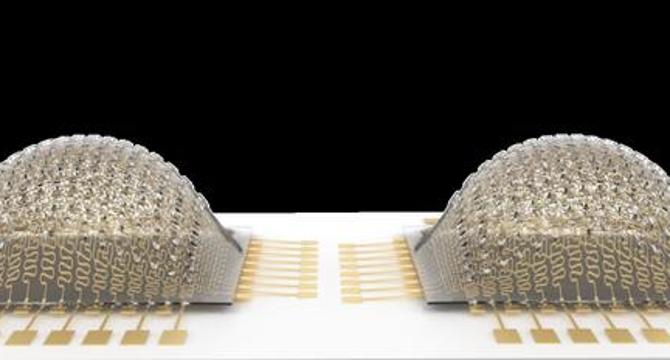Bioengineer
1w
118

Image Credit: Bioengineer
UVA Research Paper Recognized as Best of 2024 by Leading Robotics Journal
- Researchers at the University of Virginia have developed innovative artificial compound eyes inspired by the vision of the praying mantis.
- The stereoscopic vision system is capable of tracking objects in three-dimensional space, promising transformative applications in various domains.
- This research employs a biomimetic approach, replicating mantis's unique structure and functionality.
- Machine perception and navigation can be greatly improved with this technology, potentially revolutionizing the performance of robots and autonomous systems in dynamic environments.
- The innovations presented have the potential to transform how machines perceive their surroundings, making advancements in autonomous driving, robotics, and artificial intelligence applications.
- The interdisciplinary approach, coupled with the foundational principles of biomimicry, demonstrates how nature can offer insights and solutions that transcend traditional engineering paradigms.
- The prestigious recognition by Science Robotics, a top-tier journal in the field of robotics, underscores the significance of this work.
- The article is expected to spark discussions and inspire further investigations into biomimetic designs and their applications in various technological fields.
- The success of this research reinforces the idea that the future of robotics will be intrinsically tied to the lessons we learn from nature.
- This research marks a significant chapter in the story of robotics and visual systems, promising a lasting impact on the field.
Read Full Article
7 Likes
For uninterrupted reading, download the app